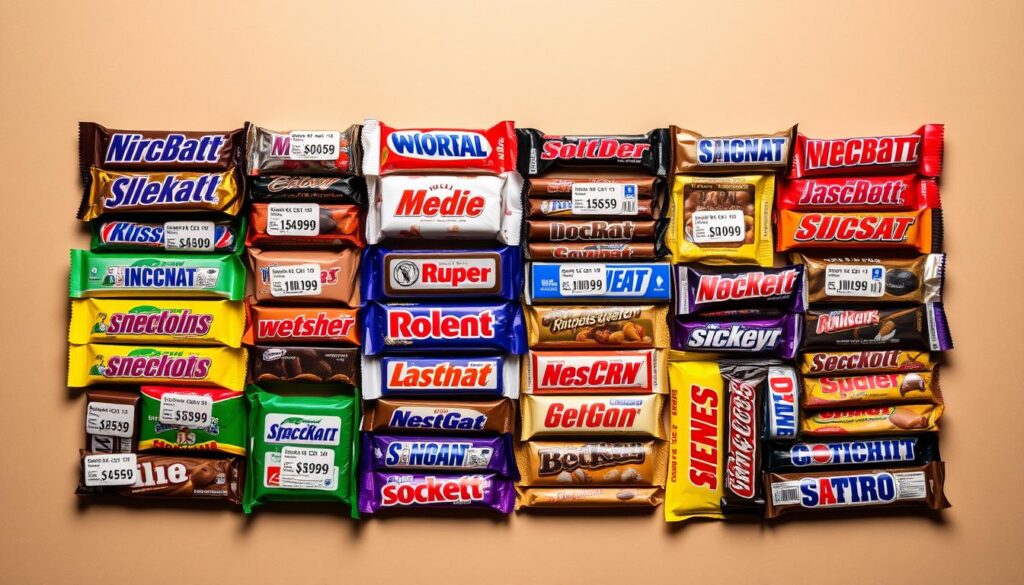Hi! I’m Zara Maddison, and I’m 12 years old just like many of you. I own a website called Assetsforkids. It helps young people learn about money in fun ways.
Have you noticed your allowance doesn’t buy as much as it used to? Maybe that chocolate treat you love now costs more than last year. That’s not your imagination – it’s something called kids inflation. It affects all of us.
I found out learning about money doesn’t have to be boring or super complicated. When I started noticing price changes on my favorite snacks, I realized this was the perfect way to explain children economics to other young people.
In this article, I’ll show you exactly why prices go up and how this impacts your spending power. We’ll use real examples that you see every day. This makes these important financial concepts easy to understand and remember.
What Is Inflation and Why Should I Care About It?
Last month, I learned something big about money. I’m Zara, and I’m twelve years old. I want to share a cool thing about money education that makes sense.
Inflation is like a sneaky force that makes things cost more over time. It’s like growing taller. You don’t wake up one morning needing new pants, right?
It grows slowly, so you don’t notice it every day. But then, suddenly, your pants are too short and you need new ones. That’s how prices go up with inflation.

My big “aha moment” was when my allowance didn’t buy as much candy. The same five dollars used to get me three chocolate bars. Now, it only gets two. That’s when money education became super important to me.
Here’s why we should care about this stuff:
- Our allowance power changes over time
- Saving up for toys takes longer than expected
- Understanding prices helps us make better choices
This isn’t boring homework stuff. Learning about money is actually pretty awesome. It connects to everything we buy and do every day.
My Shocking Discovery: When My Favorite Candy Bar Got More Expensive
I learned about inflation the hard way. I wanted to buy a Snickers bar with my birthday money. I had $10 and thought I could buy it easily.
But the cashier said I needed one more dollar. I was confused and held my money tightly.
Just three months before, the candy bar cost $9. Now it was $11? I checked my old receipts to see if I was wrong.
At home, I found my old receipt from March. It showed the price had gone up from $9 to $11. I went back to the store the next day.

I asked the clerk why candy bar prices had gone up so much. The store manager said it was because of higher costs for ingredients and shipping.
This made me start looking at prices everywhere. I compared prices on comic books, Pokemon cards, and even chips. Everything seemed more expensive!
My $5 weekly allowance felt like it was shrinking. I realized I wasn’t imagining things. This made me curious about why prices change and how it affects kids like me.
Understanding Inflation Through Kids Candy Bar Economics Made Simple
Inflation is like a big seesaw that changes all prices. When I learned about it, it was like finding a secret. It explained why my allowance doesn’t buy as much candy as before.
Demand-pull inflation is like when everyone wants the same trading cards. There are only a few packs, but lots of kids want them. So, the store can charge more money.
Cost-push inflation is different. Imagine making cookies to sell at school. If chocolate chips get more expensive, you have to charge more for your cookies. This is what happens to candy bar companies too.
Something cool I learned is when the government prints more money. It’s like everyone in class getting gold stars. But, too many gold stars make them less special.
Our economy is like a big school cafeteria. Prices change based on how popular foods are and how much they cost. If pizza is everyone’s favorite but there are only ten slices, those slices will cost more.
Learning about economic concepts children can understand is powerful. We can predict when prices might go up or down. This makes us smarter with money than many adults.
The best thing about financial literacy kids our age can learn? We get a head start on making smart money choices. These choices will help us for the rest of our lives.
The Real Reasons Why Candy Prices Keep Climbing
When I started tracking candy prices, I found out why they keep going up. Candy doesn’t get expensive by accident. There are real reasons why we pay more.
Transportation costs hit our allowance money hard. When gas prices rise, it costs more to move candy. Trucks need fuel to get chocolate to stores. So, when fuel costs go up, candy prices do too.
Weather also plays a big role. Storms or droughts in cocoa-growing countries mean less chocolate. This means higher prices for our favorite treats.
Social media makes some candies super popular fast. When everyone wants the same candy, stores raise their prices. High demand with limited supply always pushes prices up. This affects our kids savings when we buy trendy treats.
Adult money decisions also impact us. When governments print more money or change interest rates, prices go up. These big moves show up as higher candy prices.
Knowing these patterns helps me buy candy wisely. I stock up when prices are good and wait when they’re high. This way, I protect my allowance money from sudden price hikes.
The key is to understand price changes follow patterns. Once you get it, you can make better choices with your kids savings.
My Price Detective Work: Tracking Candy Costs Over Time
I became a price detective to track candy costs. This money education project was fun. I learned more about economics than from any book.
I used a simple but effective tool. I kept all candy receipts in a folder. I also took photos of prices when shopping with my parents.
Simple charts helped me see patterns. I used colored pencils on graph paper. Each month, I added new data to see price changes.
Interviewing my grandparents was shocking. My grandmother bought candy bars for 25 cents when she was my age. Now, they cost $1.50 or more.
Here’s how to become a price detective:
- Collect receipts from every candy purchase you make
- Take photos of price tags at different stores
- Create simple charts using graph paper or computer programs
- Interview family members about prices from their childhood
- Compare prices between different stores and seasons
This detective work taught me useful skills. I learned to buy candy when prices are low. I also buy in bulk during sales, saving a lot of money.
Tracking prices showed me inflation’s real impact. It affects how much candy I can buy with my allowance every week.
How Rising Prices Shrink Your Allowance Power
My $10 weekly allowance used to feel like a lot. But now, it seems to go away fast. It’s like my money is shrinking in my pocket!
Let me show you what I mean with real examples. Six months ago, my $10 could buy two comic books for $3 each. It could also get me a candy bar for $1.50, and I’d have $2.50 left for savings. Now, those comic books cost $4 each, and the candy bar is $2. My ten dollars only gets me two comic books with no money left.
This is what kids inflation looks like in action. The number on my allowance stays the same. But what I can buy keeps getting smaller. My mom said this is because of the difference between “face value” and “real value.”
Face value is the actual dollar amount I get. Real value is what that money can buy. When prices rise faster than my allowance, my real value goes down. Even though my face value stays the same.
The most frustrating part is saving for something special. I might save $20 for a new toy. But then I find out the price went up to $25 while I was saving. It feels like the finish line keeps moving further away, no matter how hard I try to reach it.
My Smart Strategies for Beating Inflation as a Kid
Fighting inflation might seem tough, but I’ve found ways to win. These strategies help me save more money as prices go up.
My first trick is the “squirrel method” of saving. I save my money in places where it grows faster than inflation. I put my allowance in a high-yield savings account that earns interest. This way, my money grows while I sleep.
I’ve also learned about investing for kids. Buying a stock is like owning a tiny piece of your favorite pizza place. If the business does well, your piece becomes more valuable. My parents helped me start with simple index funds that grow with the economy.
Smart shopping is my superpower. I compare prices before buying and wait for sales. Learning to tell wants from needs saves me a lot of money. I ask myself: “Do I really need this, or do I just want it right now?”
My inflation-proof spending habits focus on things that keep their value. I buy quality items that last longer instead of cheap stuff. I also invest in experiences and skills that can’t lose value, like learning new hobbies or taking classes.
For emergency situations when prices spike suddenly, I keep backup plans ready. I know where to find free entertainment and always have healthy snacks at home. These money management skills will help me make bigger financial decisions as I grow up.
The best part about these strategies is that they’re not just about saving money today. They’re kids savings techniques that teach valuable life skills for the future.
Conclusion
Learning about inflation through candy bars has given me superpowers with money. I can spot price changes before my friends do. This adventure taught me that inflation affects everyone, but we can stay ahead.
My skills help me make smart choices with my allowance. I know when to buy candy in bulk and wait for sales. These lessons are useful for more than just treats.
Most adults didn’t learn this when they were young. We’re already ahead. I feel confident making money decisions because I understand prices.
Start your own price tracking today. Pick three things you buy often and watch their costs for a month. Share what you find with your family and friends. They’ll be amazed at your skills.
We can’t stop inflation, but we can control how we react to it. Keep practicing and stay curious about money. Your future self will thank you for being financially smart now.
The world needs more kids who understand money. Let’s be the generation that changes how people think about finances.